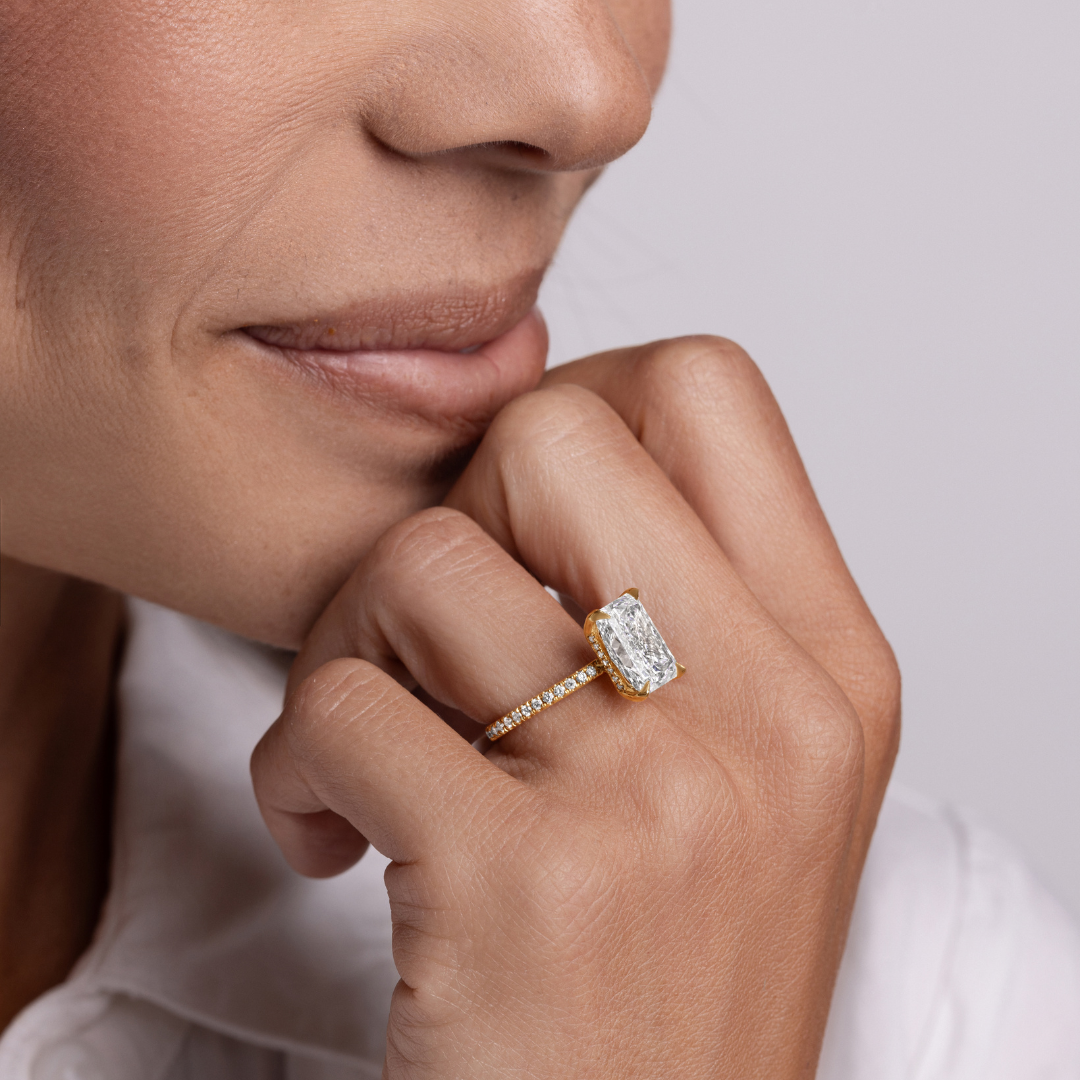Understanding Diamond Inclusions
Diamond inclusions are tiny irregularities that can be found in natural diamonds. They result from minerals or fluids being trapped inside the diamond during its formation and are often referred to as clarity characteristics or simply "inclusions."
Types of Diamond Inclusions
Diamond inclusions come in various shapes, sizes, tones, and colors. Common types include pinpoint inclusions, feather inclusions, crystal inclusions, and indented natural inclusions. Some of these irregularities are so minuscule that they are invisible to the naked eye, while others are more noticeable, taking the form of significant cracks and fractures.
While these inclusions can be seen as imperfections, they can also add to the uniqueness and beauty of a diamond. For example, pinpoints are tiny embedded crystals that can enhance a diamond's appearance. On the other hand, visible inclusions like bearded girdles, chipping, and cavities can make a diamond vulnerable to damage, including snapping and cracking upon impact.
Today, we will explore the different colors of these inclusions, specifically black and white, and help you decide which may be a better fit for your jewelry.
Distinguishing Black and White Inclusions
Beyond their color distinction, black and white diamond inclusions differ in several aspects. Let's compare them based on the 4 Cs - composition, clarity, color, and cost - to determine whether black or white inclusions are the superior choice.
Black Inclusions
Black diamond inclusions are notably more prominent and visible than inclusions of any other color. They are also more common and complement the natural white color of the diamond. Diamonds with many black inclusions are commonly known as “salt and pepper” diamonds while diamonds that are completely black are considered black diamonds. Some people even believe that black diamonds originated from meteor showers, attributing their distinctive beauty to this cosmic origin.
These black specks in diamonds are, in fact, uncrystallized carbon spots. Due to their crystalline structure, black-inclusion diamonds tend to absorb light, making them fall into a lower clarity range, denoted as "I." This is the lowest level on the diamond clarity scale, making these irregularities easily noticeable at first glance. However, this lower clarity grade also means that black inclusion diamonds are less popular and typically sold at more affordable prices compared to colorless diamonds with white inclusions.
White Inclusions
Contrary to popular belief, white diamond inclusions are not as rare as one might think. They exist in similar quantities as other types and tones of inclusions. The key difference is that they are much harder to detect in diamonds compared to black inclusions.
Because white inclusions share the same tone as the diamond, they blend in exceptionally well with the natural stone. Except for some exceptions involving wide and visible cracks, you typically need a microscope with 10x magnification to spot these transparent cracks, feathers, or pinpoints.
Another unique feature of white inclusion diamonds is their ability to reflect light. They pair beautifully with colored gemstones like red, yellow, and orange diamonds. Given their remarkable attributes and appearance, white inclusion diamonds command a significant price.
White vs. Black Inclusions
After discussing their composition, clarity, and price differences, you might think white inclusions are the clear winner. However, let's delve into potential structural damage caused by these inclusions before making a final judgment.
White inclusions, such as chips and knots, can jeopardize a diamond's safety and brilliance. Additionally, wide fractures and breaks may hinder the reflection of light inside the stone, diminishing its sparkle and radiance. These imperfections also weaken the diamond's internal structure, making it more susceptible to breaking upon impact.
In contrast, black inclusions are generally more resilient and better able to withstand accidental impacts and falls. Another significant distinction lies in their clarity range. While black inclusions typically fall into the low "I" clarity category, white inclusions range from VS2 to SI2 clarity. SI stands for "slightly included," indicating that these inclusions are visible under 10x magnification but still appear eye-clean. Of course, grading may vary for individual diamonds, including those with black inclusions.
Choosing Between Black and White Inclusions
Ultimately, the choice between black and white inclusions comes down to clarity and budget. While black inclusion diamonds are more affordable, their lower cost may also translate to reduced sparkle and beauty. In contrast, white inclusion diamonds offer a nearly flawless appearance and are well worth the investment. Your decision should be based on your desired level of transparency and your budget.
We recommend considering white inclusions with SI1 clarity (SI2 has some transparency concerns) if they are within your budget. Just ensure that the inclusion is not too wide or visible to the naked eye.
Conclusion
We hope this article has provided you with a better understanding of the differences between black and white inclusions in diamonds and how they can influence your buying decision. If you've already made your choice, feel free to explore our diverse collection of diamond jewelry by clicking here. Happy shopping!





Share:
Types of Diamond Inclusions
Difference Between Tungsten, Zirconium, and Titanium